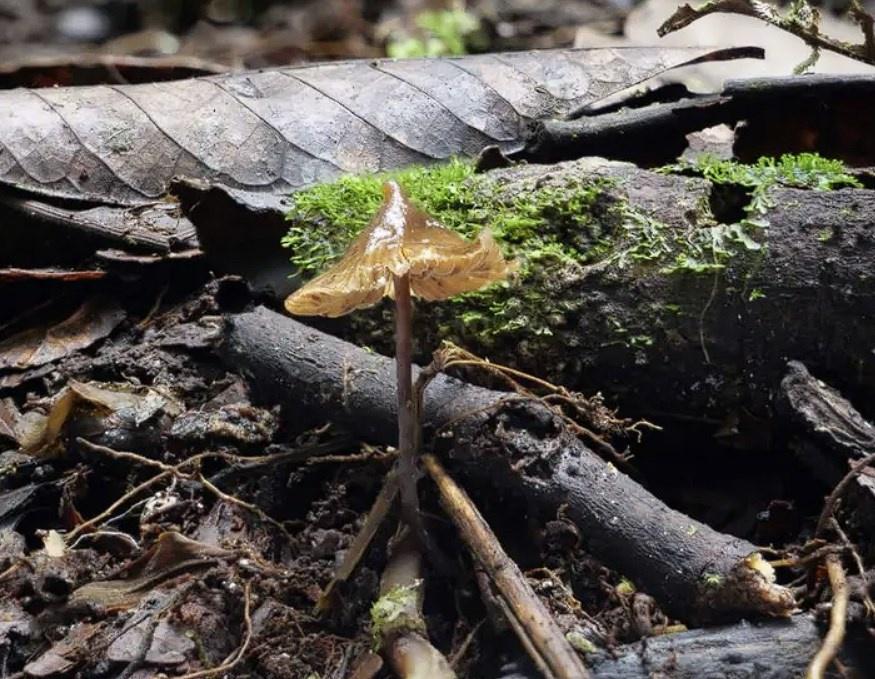Stamets’ psilocybe (Psilocybe stametsii)[i] is a very recent discovery, and almost nothing is known about it so far. In fact, it has only been found twice. Both times it was in Ecuador, both times fruiting singly, but that’s not enough information to tell us whether it always fruits singly or whether it lives anywhere else but Ecuador.
Paul Stamets, the well-known (and somewhat controversial) mycologist, author, and businessman, did not name the species after himself—he didn’t name it at all. Giuliana Furci and Bryn Dentinger, who described the new species for science, named it in his honor. So little is known about this mushroom that articles that purport to be about the mushroom sometimes end up discussing Stamets instead.
Identification & Description
Cap: Very small, brown (slightly darker in the center), conical in shape—rather like a pointed hat.
Stalk: Thin, brown.
Edibility: Unknown
Habitat: Not definitely known—it was found growing in cloud forest and fruiting from the ground, but whether it also appears in other contexts is not known.
Range: Not definitely known—it was found growing in one part of Ecuador, but could also grow other places, nobody knows yet.
P. stametsii is a seriously small mushroom; you could hide one with only a little gentle folding inside a pen cap. Since so far it seems to fruit singly, chances seem good that this thing could be all over the place without anyone noticing.
Look-Alikes
P. stametsii is a small, brown, nondescript mushroom. As such, it looks quite a bit like a great many other small, brown, nondescript mushrooms, among them species that are variously culinary, psychoactive, or dangerously toxic. The very small size and the pointed shape do make this species stand out to some extent—these are not unique characteristics, but they are a bit unusual.
Benefits
The benefits of this species are unknown. It probably contains psilocybin, given that it’s closely related to many other species that do, but it hasn’t been confirmed yet. Even if it does contain psilocybin, though, it wouldn’t be worth picking to eat unless the concentration is off the charts—it’s teeny-tiny and you are only likely to ever find one.
Most likely the most important benefit of this mushroom to humans, aside from its ecological value, is the delight of knowing it exists.
Toxicity, Safety, and/or Side-Effects
The safety concerns for this species are also unknown. Most Psilocybes are safe to eat except for the side-effects of psilocybin itself—which are usually mild, but can be serious, especially at higher doses—however, it would be foolish to assume that P. stametsii is equally safe without knowing anything about it aside from its assignment to the Psilocybe genus. We also don’t know how large its population is or how often it fruits—this might be an endangered species, for all we know. For all sorts of reasons, the safe thing seems to be just don’t eat this one. Not yet, anyway, not until we know more.
References:
[i]Dr. K. Mandrake (2023). There’s a New Shroom Species—and It’s Named After Paul Stamets. Double Blind



